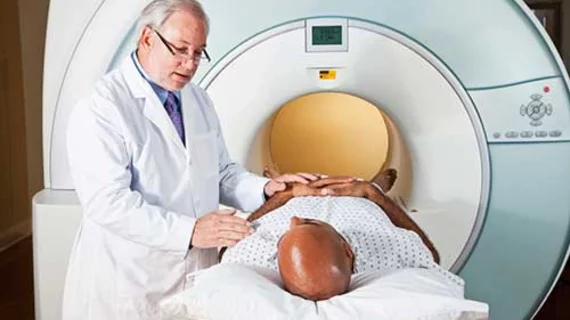Radiologists have helped significantly decrease patients’ radiation dosages over the past decade, new report finds
Changes in imaging technology, coupled with radiologist-led campaigns to raise awareness, have helped produce “significant” declines in patients’ radiation dosage.
During the decade that ended in 2016, interventional and diagnostic medical radiation dose use has plummeted 15% to 20%, the National Council on Radiation Protection and Measurements (NCRP) reported on Monday, Nov. 18. That stands in stark contrast to the previous 2009 report, which found a dramatic uptick in dosages the previous decade.
NCRP experts credited the downturn to scientific advances that have helped the field produce high-quality images at lower doses, as well as efforts by the FDA and American College of Radiology (ACR) to protect patients.
“Changes in technology—as well as campaigns to increase dose awareness and reduce dose among the medical community and the public—seem to be having the desired effect,” Mahadevappa Mahesh, PhD, co-chair of the NCRP report and a professor of radiology at Johns Hopkins, said in a statement. “These data show the medical community can continue to leverage the benefits of radiological procedures for patients while reducing dose.”
CT scans accounted for the largest percentage of radiation doses in 2016 at about 63%, up from 50% in the previous NCRP report. Use of such scans increased by about 20%, while dose per person remained flat. Meanwhile, radiation dosing decreased for many other modalities.
On Monday, the ACR attributed the sizeable decreases to the Image Gently and Image Wisely awareness campaigns, efforts to advance low-dose imaging options, the college’s Dose Index Registry and Medicare’s mandatory accreditation of imaging facilities.
ACR CEO William Thorwarth, MD, praised the field progress on Monday. He believes radiologists will continue to push the numbers further in the right direction, especially if the Centers for Medicare & Medicaid Services decides to mandate that providers consult appropriate use criteria before ordering certain imaging tests.
“We are pleased, but not surprised, that despite a steadily increasing and aging population, the medical radiation dose Americans receive is going down,” Thorwarth said in a separate statement. “We expect this trend to continue as technology advances and imaging optimization matures,” he added.

